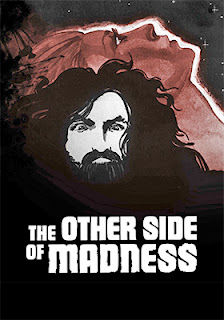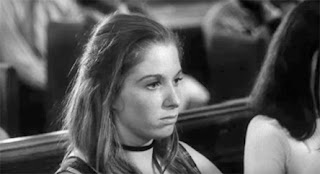The Film Detective announced this past week that a new 4K transfer from the original 35mm camera negation of director Frank Howard’s 1971 shocker, The Other Side of Madness, will be available on Nov. 10 as a limited-edition Blu-ray release … as well as a stand-alone DVD selection.
Quentin Tarantino delivered Once Upon a Time in … Hollywood and the infamous “Helter Skelter” murders got a new twist. And, of course, director Tom Gries gave us the 1976 mini-series, Helter Skelter, starring Steve Railsback as Manson (Gries was nominated for an Emmy). Both are excellent touchstones on Manson, his cult followers and their heinous crimes.
But, The Other Side of Madness is a film that goes far beyond the “recaps” and gets right into the middle of it. Indeed, if producer Wade Williams didn’t take the steps that he did in 1969 and 1970 you would be left to wonder if this film even existed … if you didn’t know the story, it might seem as something that was made up years later as an exploitation flick.
That’s not the case, not only was The Other Side of Madness filmed during the course of the trail, and at the Spahn Ranch (the only Manson-themed film to actually be shot on the actual location … by the time Helter Skelter arrived as a two-part mini-series event, much of Spahn Ranch had burned in a wild fire), but Williams had direct contact with Charles Manson during the production.
Even with the film completed, it wasn’t done. Legal battles, the MPAA slapping an “X” rating on the film (punishment?) and the actual use of the names of those involved in the killings had to be altered — all the footage is still there, but the defendants; the participants in the murders are nameless. Indeed, only the repeated use of “Charlie” remains of the actual characters. We know from history that those on trail are Manson, Susan Atkins, Patricia Krenwinkel and Leslie Van Houten.
But that is plenty … Williams even secured rights to some of Manson’s music and that remains in the film. In fact, the events depicted in The Other Side of Madness are about as close to the real thing as you are going to see … and, remember, this is a contemporary production, filmed immediately after the events and during the trail. The Tate murders are graphic, there are scenes of the trial (including all of that nonsense chanting about “Charlie”) … and the film ends with Manson and his followers arriving at the LaBianca home.
This is a one-of-a-kind film. Of that there is no debate.
As to bonus goodies, there are two presentations of the film, The Other Side of Madness and the 1976 re-release version, The Helter Skelter Murders. Additionally, there are the documentary narrated by producer Wade Williams titled The Other Side of Manson: An Interview with Producer Wade Williams, the featurette “Mechanical Man: Wade Williams Meets Manson,” the original theatrical trailers and a bonus CD featuring Charles Manson’s "Mechanical Man" and "Garbage Dump” reproduced exactly as they were released from the original 7” vinyl soundtrack.





No comments:
Post a Comment